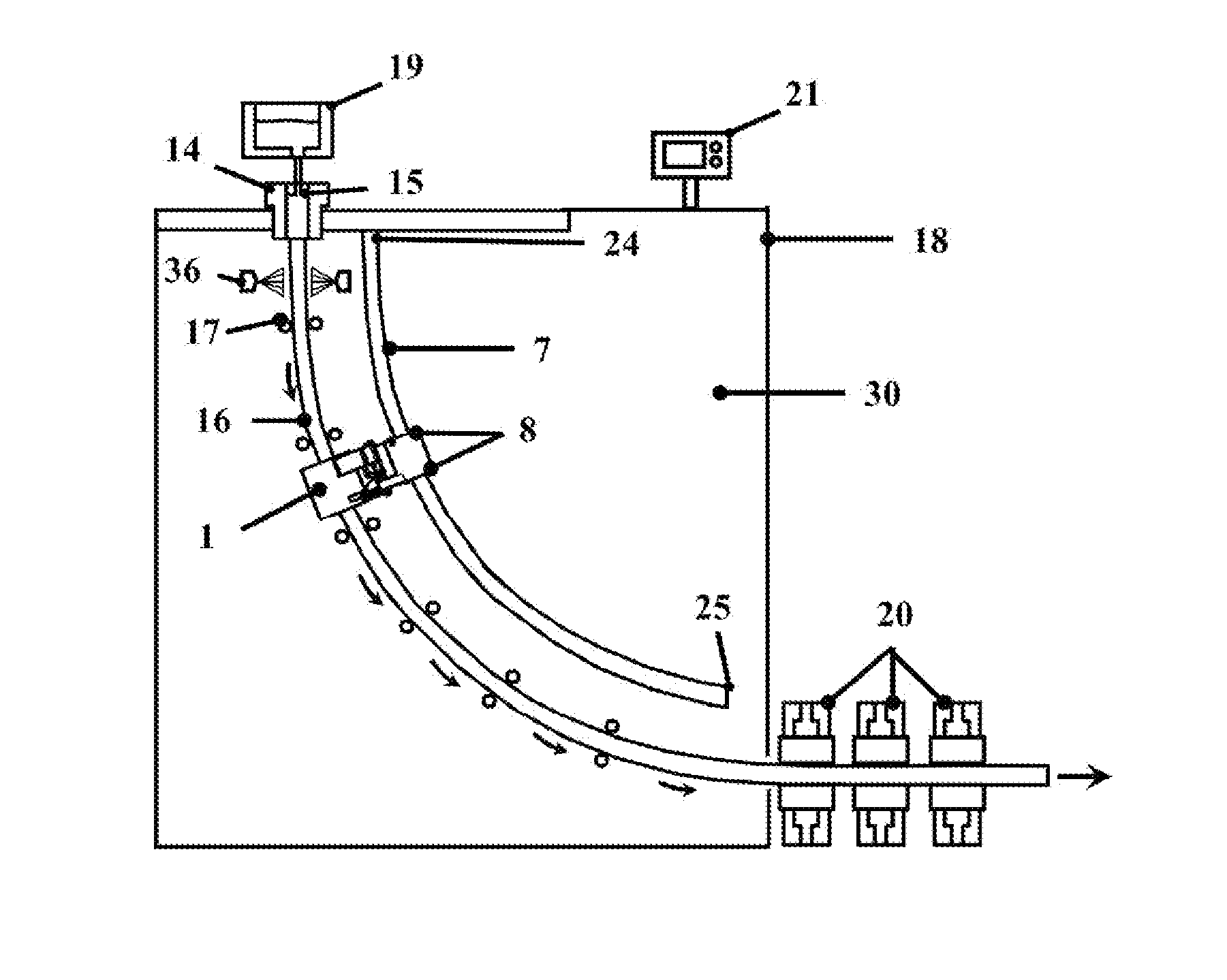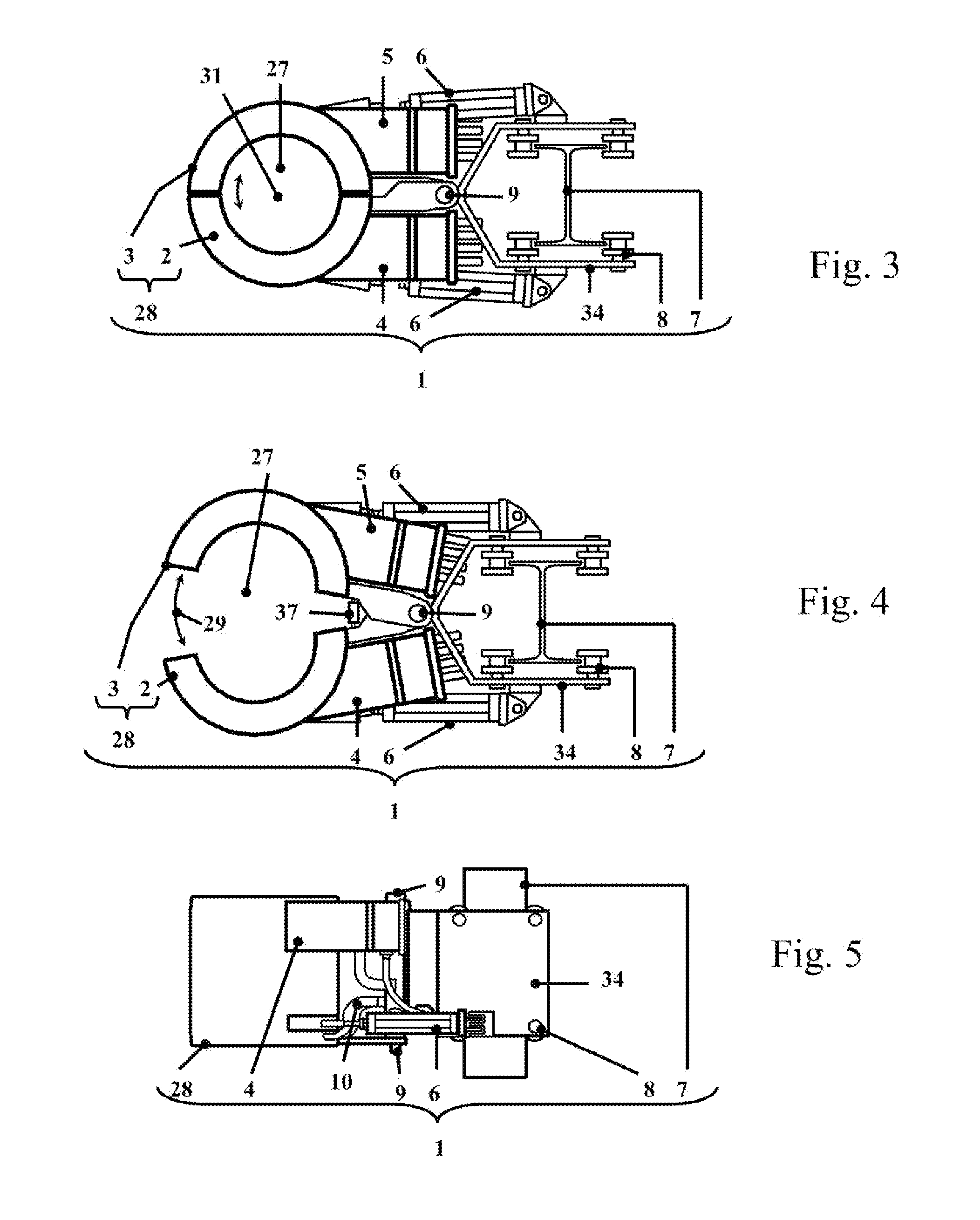Electromagnetic stirring device
a stirring device and electromagnetic technology, applied in the direction of mixing devices, casting safety devices, transportation and packaging, etc., can solve the problems of affecting the effect of the stirring device in the cooling chamber, so as to achieve the effect of less results and faster fitting out of the casting machin
- Summary
- Abstract
- Description
- Claims
- Application Information
AI Technical Summary
Benefits of technology
Problems solved by technology
Method used
Image
Examples
example 1
[0075]The temperature (FIG. 17) and solidifying profiles (FIG. 18) are estimated starting from the casting parameters relative to the casting of a C40 type steel that is poured within a square mould with side of 160 mm with the following parameters:
[0076]Mould section: 160×160 mm . . . Steel type: C40
[0077]Casting speed: 2.00 m / min . . . Steel range: 401.92 kg / min
[0078]Metallurgic length: 14.90 m . . . Temperature in tundish: 1522° C.
[0079]Liquidus temperature: 1492° C. Solidus temperature: 1439° C.
[0080]Cooling of first zone of the secondary cooling part with 65 l / min on 0.6 metres range
[0081]Cooling of second zone of the secondary cooling part with 110 l / min on 2.0 metres range
[0082]Cooling of the third zone of the secondary cooling part with 58 l / min on 5.0 metres range
[0083]On the solidifying profile (FIG. 18) the shell thickness is selected corresponding to a first position of application of one first of the electromagnetic stirring devices (1), for example in correspondence wi...
example 2
[0084]On the basis of the data reported for the example 1, on the solidifying profile (FIG. 18) the shell thickness is selected corresponding to a second application position of a second one of the electromagnetic stirring devices (1), for example in correspondence with a shell thickness equal to 75%. It is obtained a second zone (Z2) that constitutes the optimal positioning zone of the second electromagnetic stirring device (1). This second zone (Z2) is identified as the zone comprised between a first value in abscissa that corresponds to the point of intersection between the horizontal straight line corresponding to the shell thickness of 75% and the solid fraction line equal to 0.05 and a second value in abscissa that corresponds to the point of intersection between the horizontal straight line corresponding to the shell thickness of 75% and the solid fraction line equal to 0.2. In the example represented the second zone (Z2) is approximately comprised between the points having a...
example 3
[0085]On the basis of the example 2, the influence on the optimal positioning of the second electromagnetic stirring device (1) has been valued according to the type of steel and casting rate, estimating the corresponding solidifying sections and obtaining the results reported in the following in Table 1.
TABLE 1SQUARE SECTION 160Casting speedOptimal position d2Steel type[m / min]Distance from meniscus [m]35KB1.810.32.011.6C401.810.02.011.416MnCr51.810.62.012.1
PUM
| Property | Measurement | Unit |
|---|---|---|
| thickness | aaaaa | aaaaa |
| frequency | aaaaa | aaaaa |
| frequency | aaaaa | aaaaa |
Abstract
Description
Claims
Application Information
 Login to View More
Login to View More - R&D
- Intellectual Property
- Life Sciences
- Materials
- Tech Scout
- Unparalleled Data Quality
- Higher Quality Content
- 60% Fewer Hallucinations
Browse by: Latest US Patents, China's latest patents, Technical Efficacy Thesaurus, Application Domain, Technology Topic, Popular Technical Reports.
© 2025 PatSnap. All rights reserved.Legal|Privacy policy|Modern Slavery Act Transparency Statement|Sitemap|About US| Contact US: help@patsnap.com



